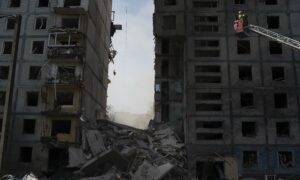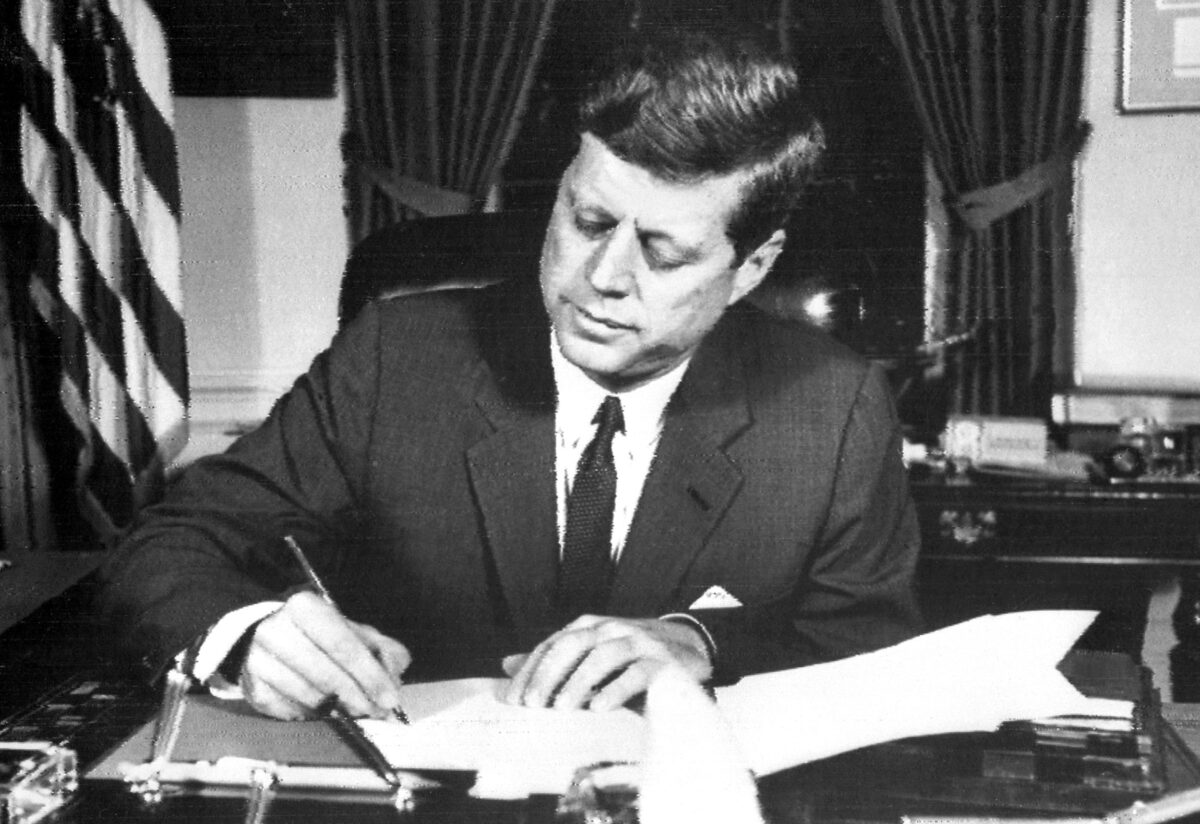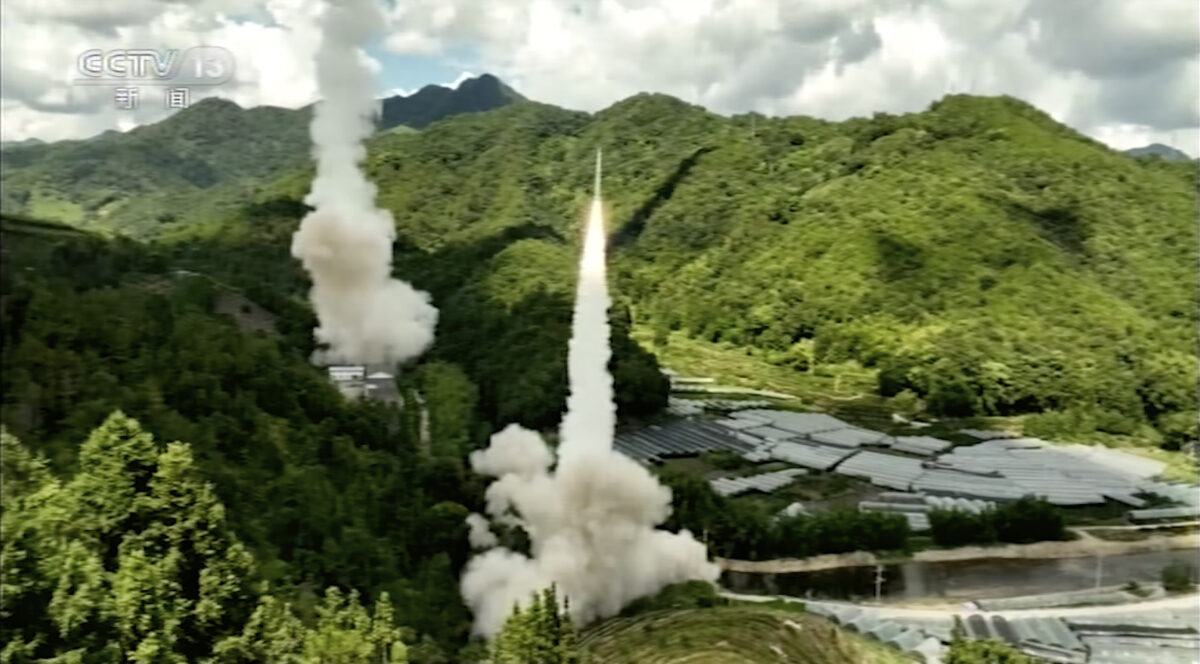Will the Ukrainian War Lead to Another Cuban Missile Crisis Moment?
CommentarySixty years ago this month, the Cuban Missile Crisis brought the world to the brink of a nuclear war. With Russian threats that “all options are on the table” in its ongoing war in Ukraine and U.S. fears that the Kremlin may resort to tactical nuclear weapons to counter Ukraine’s counteroffensive, is the world hurling toward another Cuban Missile Crisis-like nuclear confrontation? Recently, I sat down with Robert Wallace, a retired CIA officer and intelligence historian, as well as an old friend, to discuss the parallels between the Cuban Missile Crisis and the current Russian-American confrontation in Ukraine. Wallace is also the author of “Spycraft: The Secret History of the CIA’s Spytechs, from Communism to al-Qaeda” and co-executive producer of the eight-episode Netflix series “Spycraft.” The main events of the Cuban Missile Crisis are well known. According to Wallace, U.S. intelligence had collected imagery of Soviet-aided missile site construction in Cuba for weeks before the October 1962 crisis. Much of the photography came from stepped-up U-2 reconnaissance flights over the island. When confronted, the Cuban and Soviet governments disingenuously claimed the sites were defensive only. While some defensive surface-to-air missile sites were confirmed, analysis of overhead imagery revealed that a site at San Cristobal supported nuclear-tipped SS-4 medium-range offensive missiles capable of reaching, in a matter of minutes, Washington and much of the U.S. east coast and interior. Wallace points out, however, that the White House had another important source of intelligence in addition to the photographic evidence supplied by the U-2 flights. For several years, Soviet GRU Col. Oleg Penkovsky, the West’s most important spy in Moscow, had been supplying critical information and insight into Soviet capabilities and the thinking of key decision-makers. Penkovsky, notes Wallace, “who had been run jointly by American and British intelligence for two years, had provided a stream of top-secret information so voluminous that multiple code names such as Hero, Ironbark and Chickadee were used to create an illusion the intelligence originated from multiple sources.” Then-President John F. Kennedy described the threat to the American public in a somber television address on Oct. 22, 1962, declaring it would not be tolerated. U.S. President John F. Kennedy signs the order for a naval blockade of Cuba during the Cuban Missile Crisis, on Oct. 24, 1962. (AFP via Getty Images) Per Wallace, “analysis of the overhead images from the U-2 overflights combined with Penkovsky’s reporting presented Kennedy with response options, including a naval blockade to prevent Soviet ships from reaching the island.” Wallace notes that Kennedy “made this intelligence-enabled a short-of-war decision, opening a path to a peaceful resolution.” On Oct. 28, following tense message exchanges with Kennedy, Soviet Premier Nikita Khrushchev publicly announced the missiles would be dismantled and removed from Cuba, ending the crisis. Russian threats to use tactical nuclear weapons on the battlefield in Ukraine are the closest the world has been to a nuclear confrontation since the Cuban Missile Crisis. Wallace points out, however, that while there are important similarities between the two confrontations, there are also important differences. Historical events are never parallel, argues Wallace. “In the Ukraine war, the Russians are threatening the use of tactical nuclear weapons on the local battlefield against Ukrainian military forces, not launching nuclear-armed missiles against the United States.” The consequences of such action, he notes, should, however, not be minimized. “More than 75 years of international nuclear restraint would be breached. It is unlikely NATO would tolerate the engagement of such weapons by Russia without a proportional response. Once the nuclear genie escapes from the lamp, escalation becomes more likely, more deadly, more destructive.” On the other hand, argues Wallace, intelligence capabilities have grown significantly over the intervening period. “The superiority of 21st-century technical intelligence capabilities of the US and NATO over those of 1962 is astounding. While the Corona satellite was circling the earth 60 years ago, its mission orbit did not take it over Cuba during the tensest days of the standoff. Today, real-time collection and data dissemination are embedded in satellite, airborne, ground, and ocean systems. Imaging targeted electronic signals and communications are collected and distributed in real-time. Analytic capabilities have been enhanced by cyber technologies.” He notes that “undetected clandestine physical movement of nuclear materials, weapons, and support equipment are unlikely,” pointing out that “the U.S. should have ample warning that Russia is preparing to use nuclear weapons.” “Knowledge of a readiness to use any weapon is likely before the event,” he argue

Commentary
Sixty years ago this month, the Cuban Missile Crisis brought the world to the brink of a nuclear war. With Russian threats that “all options are on the table” in its ongoing war in Ukraine and U.S. fears that the Kremlin may resort to tactical nuclear weapons to counter Ukraine’s counteroffensive, is the world hurling toward another Cuban Missile Crisis-like nuclear confrontation?
Recently, I sat down with Robert Wallace, a retired CIA officer and intelligence historian, as well as an old friend, to discuss the parallels between the Cuban Missile Crisis and the current Russian-American confrontation in Ukraine. Wallace is also the author of “Spycraft: The Secret History of the CIA’s Spytechs, from Communism to al-Qaeda” and co-executive producer of the eight-episode Netflix series “Spycraft.”
The main events of the Cuban Missile Crisis are well known. According to Wallace, U.S. intelligence had collected imagery of Soviet-aided missile site construction in Cuba for weeks before the October 1962 crisis. Much of the photography came from stepped-up U-2 reconnaissance flights over the island.
When confronted, the Cuban and Soviet governments disingenuously claimed the sites were defensive only. While some defensive surface-to-air missile sites were confirmed, analysis of overhead imagery revealed that a site at San Cristobal supported nuclear-tipped SS-4 medium-range offensive missiles capable of reaching, in a matter of minutes, Washington and much of the U.S. east coast and interior.
Wallace points out, however, that the White House had another important source of intelligence in addition to the photographic evidence supplied by the U-2 flights.
For several years, Soviet GRU Col. Oleg Penkovsky, the West’s most important spy in Moscow, had been supplying critical information and insight into Soviet capabilities and the thinking of key decision-makers.
Penkovsky, notes Wallace, “who had been run jointly by American and British intelligence for two years, had provided a stream of top-secret information so voluminous that multiple code names such as Hero, Ironbark and Chickadee were used to create an illusion the intelligence originated from multiple sources.”
Then-President John F. Kennedy described the threat to the American public in a somber television address on Oct. 22, 1962, declaring it would not be tolerated.

Per Wallace, “analysis of the overhead images from the U-2 overflights combined with Penkovsky’s reporting presented Kennedy with response options, including a naval blockade to prevent Soviet ships from reaching the island.”
Wallace notes that Kennedy “made this intelligence-enabled a short-of-war decision, opening a path to a peaceful resolution.” On Oct. 28, following tense message exchanges with Kennedy, Soviet Premier Nikita Khrushchev publicly announced the missiles would be dismantled and removed from Cuba, ending the crisis.
Russian threats to use tactical nuclear weapons on the battlefield in Ukraine are the closest the world has been to a nuclear confrontation since the Cuban Missile Crisis.
Wallace points out, however, that while there are important similarities between the two confrontations, there are also important differences.
Historical events are never parallel, argues Wallace. “In the Ukraine war, the Russians are threatening the use of tactical nuclear weapons on the local battlefield against Ukrainian military forces, not launching nuclear-armed missiles against the United States.”
The consequences of such action, he notes, should, however, not be minimized. “More than 75 years of international nuclear restraint would be breached. It is unlikely NATO would tolerate the engagement of such weapons by Russia without a proportional response. Once the nuclear genie escapes from the lamp, escalation becomes more likely, more deadly, more destructive.”
On the other hand, argues Wallace, intelligence capabilities have grown significantly over the intervening period.
“The superiority of 21st-century technical intelligence capabilities of the US and NATO over those of 1962 is astounding. While the Corona satellite was circling the earth 60 years ago, its mission orbit did not take it over Cuba during the tensest days of the standoff.
Today, real-time collection and data dissemination are embedded in satellite, airborne, ground, and ocean systems. Imaging targeted electronic signals and communications are collected and distributed in real-time. Analytic capabilities have been enhanced by cyber technologies.”
He notes that “undetected clandestine physical movement of nuclear materials, weapons, and support equipment are unlikely,” pointing out that “the U.S. should have ample warning that Russia is preparing to use nuclear weapons.”
“Knowledge of a readiness to use any weapon is likely before the event,” he argues, although “predicting the timing of launch remains ambiguous.”
He adds, “Positioning these for use would be provocative, but the decision to use is likely one that not even those authorized to make will ‘know’ much in advance.” Because the actual use of theater weapons is often in the hands of local commanders, a particular danger, warns Wallace, lies in the unauthorized or accidental firing of a nuclear device.
Wallace also points out that Russian use of theater nuclear weapons in Ukraine would be problematic for China, a key Moscow ally.
On the one hand, argues Wallace, “the cynic might say China welcomes Russia and the U.S. breaking the world’s nuclear containment chamber proving neither can be trusted. This now creates the universal danger of nukes, and any country can now assert a need to have those in the military inventory. Future actual use would be more readily justified.”

Without question, Wallace points out that “China would seize the opportunity to let the world, especially Taiwan, know tactical nuclear weapons are part of its arsenal and, should it be necessary to use, China wasn’t the first.”
On the other hand, Wallace believes that “China is more likely to oppose Russian use and do so privately as well as publicly. The resulting destabilized international environment could only serve to interrupt China’s 25-year successful expansion of influence and interest in Asia, Latin America, and Africa.”
Moreover, he points out that “the China and Russia relationship is tenuous. They share a border that is not always peaceful, and past diplomatic relations have been uneven. China understands that once used against Ukraine, Russian tactical nukes know no national boundaries.”
Ultimately, the decision to use theater nuclear weapons in the Ukrainian war will fall on Russian President Vladimir Putin. No one knows what Putin might do, including, at this point, Putin himself.
Putting aside the issue of whether there would even be a battlefield scenario that justifies the use of such weapons, Putin might well opt to use a nuclear weapon to pursue a strategy of escalation to de-escalate the conflict, gambling that to avert the Russian use of nuclear weapons. The United States and NATO would pressure Kyiv to rein in its offensive or force them to reduce the flow of military assistance to Ukraine.
It is clear that the world is closer to witnessing the use of nuclear weapons than it has been since the Cuban Missile Crisis 60 years ago.
Views expressed in this article are the opinions of the author and do not necessarily reflect the views of The Epoch Times.












